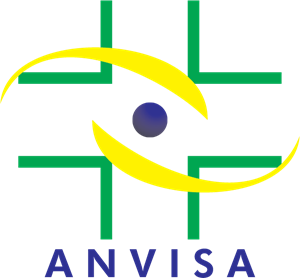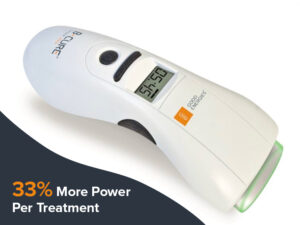Finger Joint Pain
What are the causes, how is it treated and why is B-Cure Laser considered an effective and popular solution among those who suffer from finger joint pain?
Our fingers are important. We use them constantly throughout the day for various tasks. When our fingers fail to work, as we require them to, everyday tasks become difficult and painful. What can we do when our finger joints begin to fail?
Rheumatic Joint Inflammation (Rheumatoid Arthritis) in the Fingers
This is a multisystem chronic illness caused as a result of immune system failure. The disease affects many joints in the body symmetrically while in most cases it is visible in the finger and wrist joints. In addition to attacking the joints, it is also evident in many other of the body’s systems including the respiratory system, the heart, blood vessels, skin and more.
As the disease progresses, patients experience severe limited movement in the finger joints and, over time, the fingers may become severely deformed, making it even more difficult to function.
As Rheumatic Joint Inflammation is an autoimmune disease, medication has not yet been discovered to treat it. Treatment prescribed is aimed mainly at reducing the severity of inflammation and pain, and attempting to maintain the joints’ range of movement as best as possible.
Rheumatoid arthritis is a relatively common disease, which causes pain, reduces the range of movement and impedes functionality. Conservative treatment in the early stages is effective and may even halt progression.
Osteoarthritis (Wear and Tear arthritis)
Osteoarthritis, also called wear and tear arthritis, is the most common type of arthritis of the fingers. Osteoarthritis means that the normal cartilage is worn away, causing pain. The most frequently affected joints in the hand are the knuckles of the mid-finger, fingertips and the joint at the base of the thumb. This is the most common condition of the joints, and the symptoms appear in almost half the population aged 65 and over. The fingers may become stiff, painful and swollen, and lumps may develop around the joints.
Over time, the pain tends to decrease, and usually disappears, but the swelling and the lumps remain.
The fingers may also become crooked, turning sideways in the area of the damaged joints, and sometimes cysts will develop (pockets filled with fluid) which cause pain. In certain cases, lumps develop at the base of the thumb where it is attached to the wrist. This lump can cause great pain and hinder the performance of many daily tasks such as writing, opening a jar or turning a key in the lock.
Psoriatic Arthritis
Psoriatic arthritis is a type of arthritis that appears in 7%-10% of those who suffer from psoriasis.
Trigger Finger
Trigger Finger is a condition in which one of the fingers gets stuck in a bent position. The finger may bend or straighten with a snap like a trigger being pulled and released. Trigger Finger is also known as Stenosing Tenosynovitis. Is occurs when inflammation narrows the space within the sheath that surrounds the tendon of the affected finger. If severe, the finger may become locked in a bent position.
People whose work or hobbies require repetitive gripping actions are at high risk of developing this condition. This condition is more common in women and in diabetics.
Common Treatments for Pains in the Finger Joints
Common treatments include anti-inflammatory drugs, painkillers, low-level laser, medicated creams and steroids. In extreme cases the patient may be referred for surgery.
Treatment with low-level laser is becoming popular among those suffering from minor joint pain in general, and finger joint pain in particular.
B-Cure Laser is effective in treatment for trigger finger syndrome. It helps treat inflammation, reduces pain and swelling.
B-Cure Laser provides breakthrough laser therapy, offering the power of some professional lasers as used in clinics, in a lightweight portable device that may be used from the comfort of home.
The treatment is safe, effective and may provide lasting pain relief.
B-Cure Laser’s restorative power is provided by advanced laser technology.
B-Cure Laser should be placed in contact with the skin allowing the photon energy to penetrate the tissues. This stimulates the body to produce adenosine triphosphate otherwise known as ATP, which carries energy within the cells. The ATP interacts with various biomolecules inside the cells promoting normal cell function and enhancing the body’s natural processes.
Patients recover from muscular, skeletal, and nerve injuries as cells regenerate faster and function better.
Research has proved that using the B-Cure Laser for painful finger conditions provides cells with more energy to perform their functions.
Therapeutic effects of LLLT (laser phototherapy) include:
- Increased production of ATP (Adenosine Triphosphate)
- Increased cellular metabolism
- Increased collagen production
- Increased enzyme production
- Increased protein synthesis
- Improved blood circulation
- Improved lymphatic flow and drainage
- Reduced inflammation
All this serves to boost the body’s natural healing power, targeting the root causes of pain and providing rapid relief.
B-Cure Laser is unique due to it’s beam that covers a surface of 4.5 cm, making it possible to treat a wide range of painful conditions easily, effectively and quickly.
B-Cure Laser is now available for home use and has been proven clinically effective and safe. The treatment has no known side effects and is a non-invasive method for treating many types of orthopedic conditions.
B-Cure Laser is safe for all ages, and does not require protective eyewear during use.
What Are the Benefits of B-Cure Laser?
- May reduce chronic pain
- Non-invasive and non-surgical treatment
- Suitable for all ages
- No known side effects
- Clinically proven by many studies
- Easy and safe for home use
Clinical research conducted at Parma University in Italy proved the significant efficacy of B-Cure Laser for the treatment of small joints. It was found that B-Cure Laser led to a substantial reduction in the pain level.
For treatment of finger joint pain, treat for a duration of 8 minutes on the inner side of the finger. Treat the outer side of the painful finger for an additional 8 minutes. Also, treat along the line that separates the base of the fingers from the palm.
To make treatment more convenient, use the adjustable stand. Stabilize the device and the stand and treat the area without moving, so that the laser beam penetrates deep into the tissues.
In order to reach optimal results, repeat the treatment at least twice a day.





